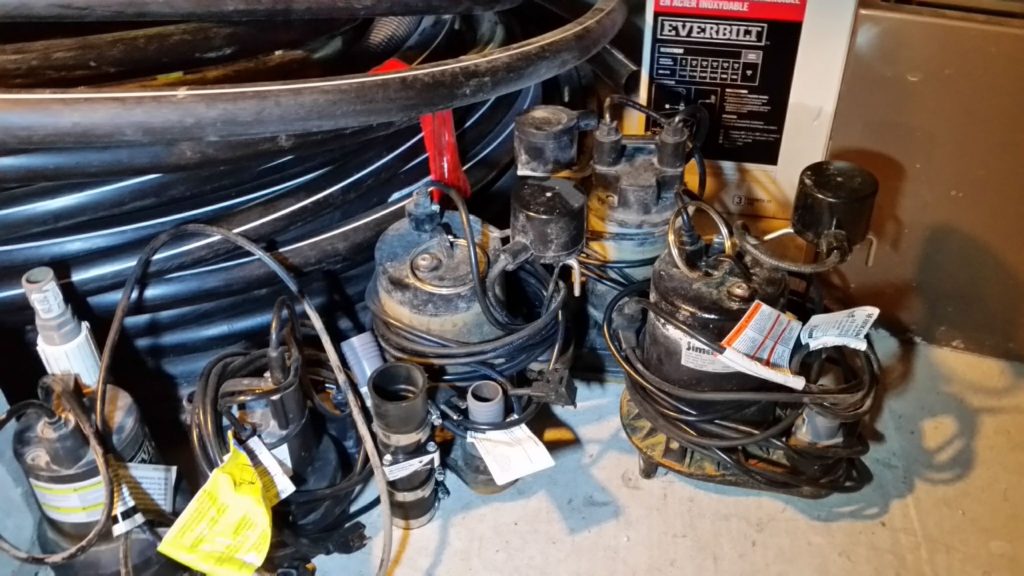Abstract: Halfmoon Bay Home Inspector notes on homes that are close to the high water line. We discuss preparations in the event of a flood event.
Photo: Water pumps and hoses are stored in the crawl space. They are ready to be deployed in case of high water levels force water into the basement or crawl space.
EKAN recently completed inspections of two stunning waterfront properties. One was 5 meters above the salt water high water tide line. The other property was on a fresh water lake and was just 2 meters above the winter lake level.
Oceanfront and lakefront considerations
Both properties were ‘high and dry’ during the inspection. But is this enough of an ‘all clear’ rating? Certainly not! Ocean storms and waves can move a lot of water and or spray high up the beach. Lakefront beaches are at their lowest levels in winter and do rise dramatically with the spring melt.
Check the history
Buyers should always look into water ingress from the ocean or lake. The first line of inquiry should be the disclosure statement. After that, ask your agent to follow-up with the sellers if there are emergency measures that have been employed in the past to protect the property from ocean or lake surges. Finally an experienced home inspector will be looking for tell-tale signs of prior high water attack.Be prepared.
Emergency preparedness is a good sign
There is nothing wrong with a property that is prepared for flooding. For example, the lakefront property had multiple sump pumps, hoses, emergency generator and fuel tanks stored in the shop and crawls space.
Include training in the sales agreement
As responsible buyers, do your due diligence. If flood preparedness is part of the ownership responsibilities, then be sure to know how to use the material and equipment included with the house purchase. Sellers are more than willing to provide information and training on how to deploy and operate these systems.
Know how to deploy flood protection
During the house inspection we look for not only indications of water ingress but also for flood preparedness. The feature photo with this post shows the sump pumps and hoses found in the crawlspace of the lakefront property. There were no sump pits in the floor slab. Therefore this property likely has sump pump pits outside, between the house and the lake. Since our inspection was done during winter, snow covered conditions, those locations could not be found. In this particular case, the buyers are advised to find out from the sellers where the pits are located.
Seasonal use requires on-going checks by a local firm
Low-bank waterfront properties that are used as seasonal or vacation get-aways need on-going monitoring. Sometimes, flood protection may need to be deployed. Absentee buyers need to factor this security need into the cost of ownership.

